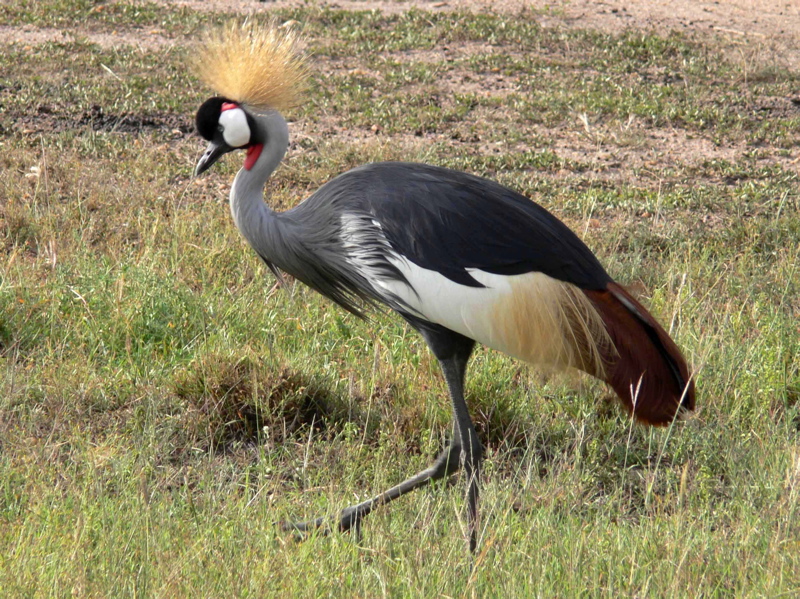
Balearica regulorum
SUBFAMILY
Balearicinae
TAXONOMY
Arthropoпdes regulorum Bennett, 1834, South Africa. Two subspecies.
OTHER COMMON NAMES
English: Blue-necked crane, royal crane; French: Grue royale;
German: Sьdafrikanischer kronenkranich; Spanish: Grulla
Coronada Cuelligrнs.
PHYSICAL CHARACTERISTICS
Height 39–43.3 in (100–110) cm; wingspan 71–79 in (180–200
cm); weight 6.6–8.8 lb (3–4) kg. Distinctive crown of gold
feathers. Pale gray neck and red throat wattles.
DISTRIBUTION
Eastern Africa from Kenya to South Africa, west to Zambia,
also Angola and Namibia.
HABITAT
Uses wetlands and grasslands or savanna.
BEHAVIOR
These birds perch in trees and use ground nests, or rarely tree
nests, abandoned by other large birds.
FEEDING ECOLOGY AND DIET
Wide range of food preferences, including seeds and insects.
REPRODUCTIVE BIOLOGY
Breed in wetland-grassland areas.
CONSERVATION STATUS
Not threatened. The most abundant crane in Africa, though populations
have declined. Continued wetland drainage may threaten
its future, as many live and forage outside of protected areas.
SIGNIFICANCE TO HUMANS
Gray-crowned cranes are the national bird of Uganda and regarded
as a sacred bird or symbol in Kenya, Namibia, South
Africa, and Zambia.
Other popular Animals
Photo Gallery of - Gray crowned crane




 Animalia Life
Animalia Life